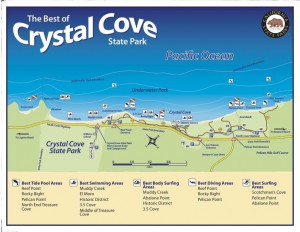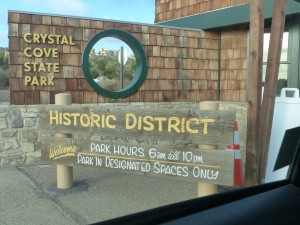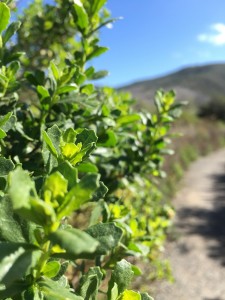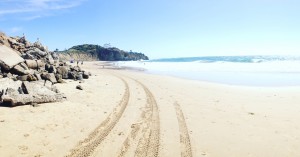Crystal Cove is now a state park, but it has a unique history which helped shape the lives of many as well as the community and environment around it.
Before becoming a State Park:
Crystal Cove is a beautiful stretch of coastline. Some of the first real crowds here were Hollywood filmmakers in the 1920s. (Fun Fact: The first documented movie filmed at Crystal Cove was an early version of “Treasure Island”) The first residents were people who set up tents here and others gradually began to build cottages. The Pacific Coast Highway officially opened in 1926, which created public access to the cove. At this time, this spot was becoming known as a recreation area. Land was also leased by Japanese farmers who planted hundreds of crops on the hillsides in the surrounding area. During WWII, the US Military acquired the land from the Irvine ranch for coastal defense systems. During the 1950s 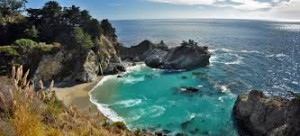 Crystal Cove experienced its peak through the recreational community, cottage tenants, and the tent cabiners. The “El Moro Beach Trailer Park” was established into a permanent mobile home facility in 1956.
Crystal Cove experienced its peak through the recreational community, cottage tenants, and the tent cabiners. The “El Moro Beach Trailer Park” was established into a permanent mobile home facility in 1956.
Present:
Crystal Cove became a California State Park in 1979. In the late 1990s, Crystal Cove’s iconic Historic District was in danger of being turned into a luxury resort. Crystal Cove Conservancy (formerly the Alliance to Rescue Crystal Cove; Crystal Cove Alliance) was founded in 1999 by former resident Laura Davick to preserve the cottages in the Historic District and restore them for educational and overnight usage. Since then, the Conservancy has restored 29 of the 46 original cottages, and has evolved to become Crystal Cove State Park’s cooperating association and concessionaire. Today, the Conservancy has become known for its innovative educational programs, and also oversees overnight cottage rentals in the Historic District through its subsidiary, Crystal Cove Beach Cottages.
Crystal Cove Conservancy’s unique STEM (Science, Technology, Engineering, Mathematics) education programs use authentic field science and monitoring to immerse students and the public in the practice of conservation and managing open spaces. One standout program, the Marine Protected Area (MPA) Citizen Science Cruise, involves junior high and high school students in important monitoring in Crystal Cove’s Marine Conservation Area. The data that students collect will be used by Crystal Cove resource managers to inform the five-year MPA adaptive review process, which is due to take place in 2017.
The MPA Citizen Science Cruise has been nationally recognized; in 2014, it was featured in a statewide environmental conference and became the focus of an episode in a PBS television series. In the 2015-2016 school year, the Conservancy anticipates that the MPA Citizen Science Cruise program will grow to include 2,000 students from 50 classrooms, including a large majority drawn from Title 1 schools.
 Crystal Cove State Park invites students to participate in a variety of interpretive educational programs. These programs are available for school and other organized groups throughout the year in the park. All programs are curriculum-based, fun, and interactive and can be adapted to any grade level. These programs can be found here.
Crystal Cove State Park invites students to participate in a variety of interpretive educational programs. These programs are available for school and other organized groups throughout the year in the park. All programs are curriculum-based, fun, and interactive and can be adapted to any grade level. These programs can be found here.
Historic District:
One of the most popular features of Crystal Cove State Park is its historic district. Some facts about the historic district:
- The historic district encompasses a 12.3-acre coastal portion of Crystal Cove State Park
- It includes 46 vintage rustic coastal cottages (built originally in the 1930’s and 40’s)
- It is located next to Los Trancos Creek
- Phases I and II of its restoration have been completed by California State Parks and the Crystal Cove Conservancy.
Visitor amenities:
- cottages for visitor services: 21 overnight stay
- educational and community programs
- Beachcomber Café
